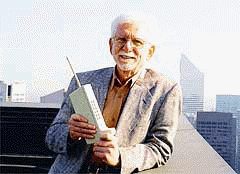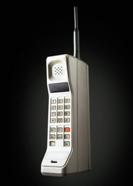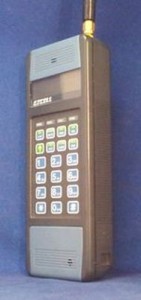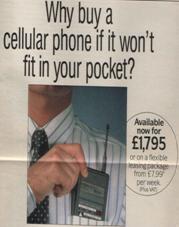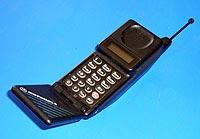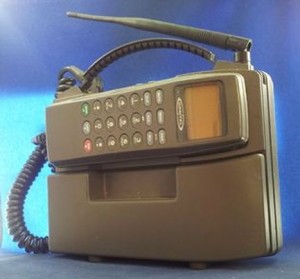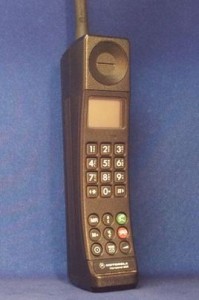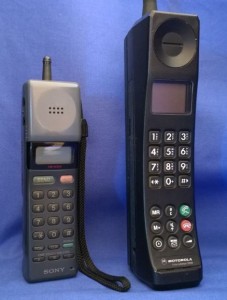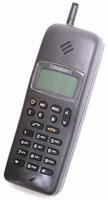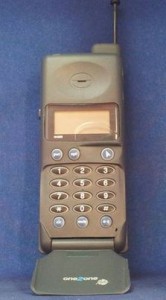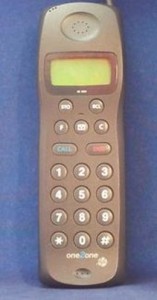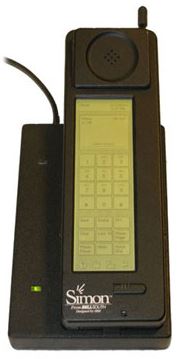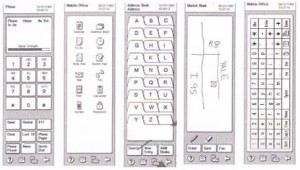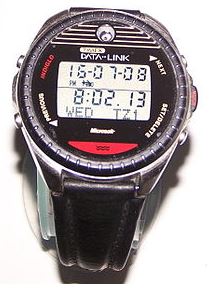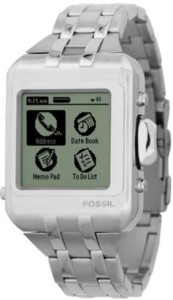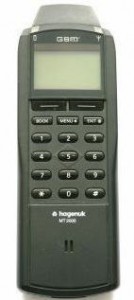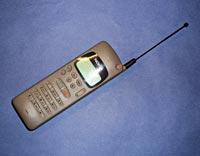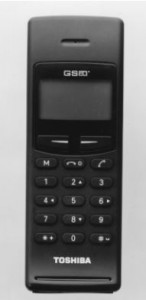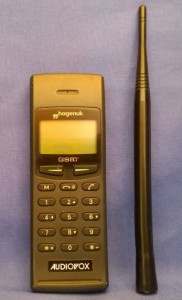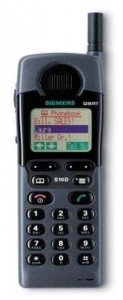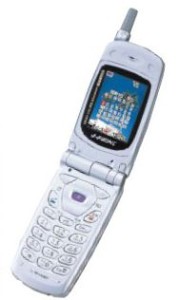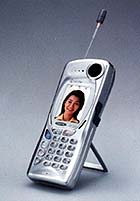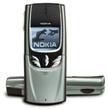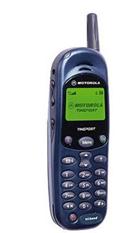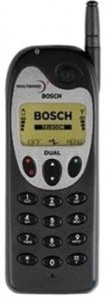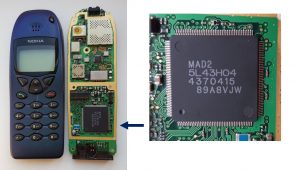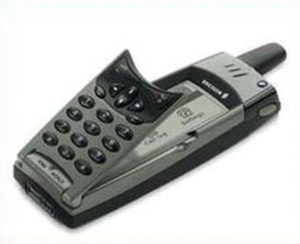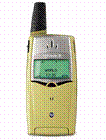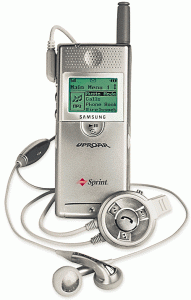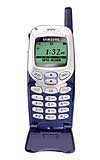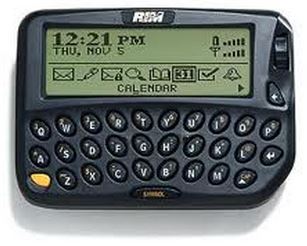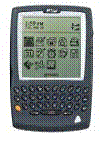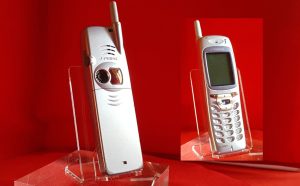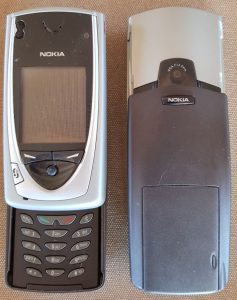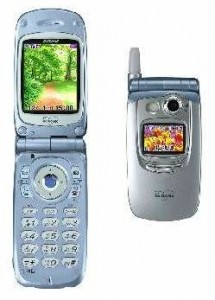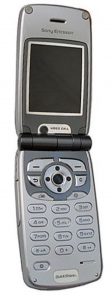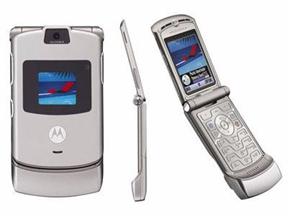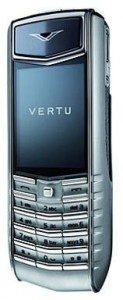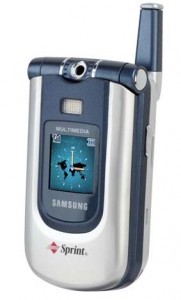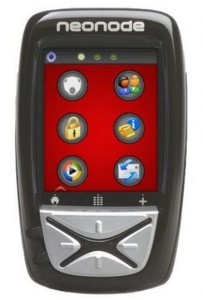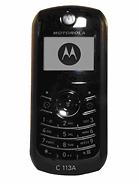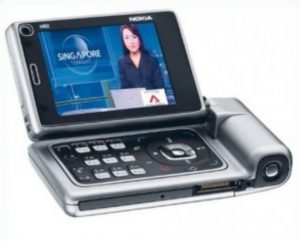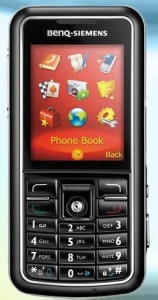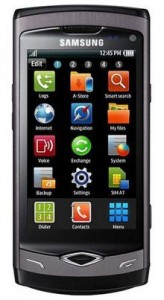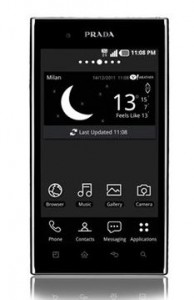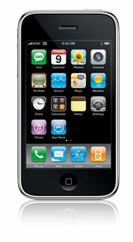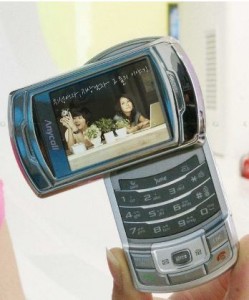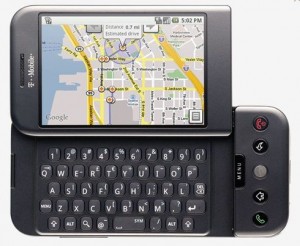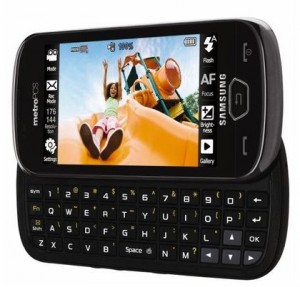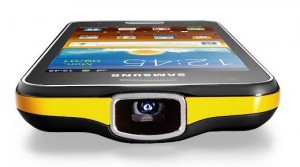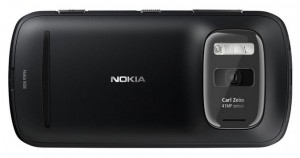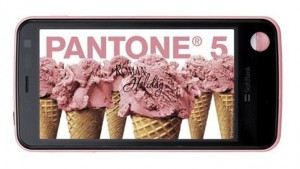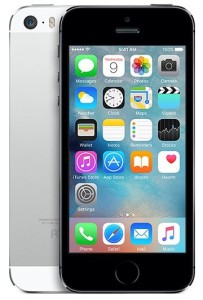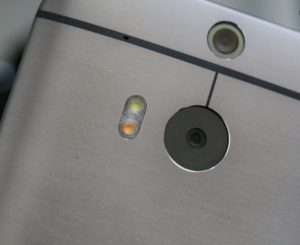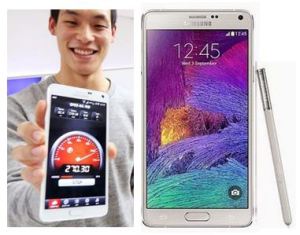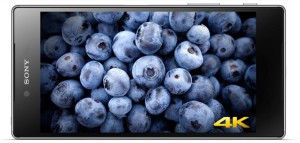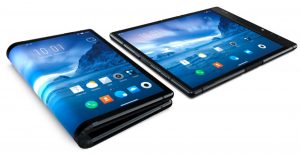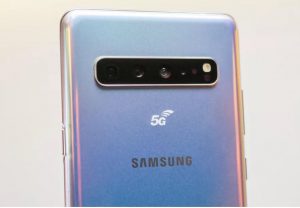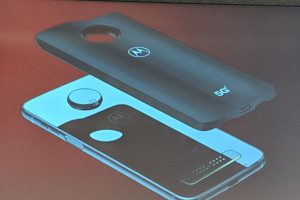The mobile phone has been a huge magnet for invention and a window on modern technology achievements. This fascinating progress is presented below through an expert selection of the mobiles that were the first to hit a key technology milestone. Many have influenced the entire industry and changed the functions and performance of personal wireless devices we all carry around today. It is also a gallery of the most collectable mobile phones in the world. Some are on show in the Information Age Gallery at the Science Museum in London. Others are in private collections, such as the one displayed at the University of Surrey 5GIC.
Technology change has not been the only force shaping the history of the mobile phone. A second distinct driver has been industrial design. A companion section on “Great Industrial Designs” identifies the outstanding designs that once drove a significant part of the mobile phone market. These two sections provides the world’s most insightful resource on mobile phone history.
SUMMARY AND TIME-LINE
(Click on the heading of interest:)
PERIOD 1973-1983 (Dawn of the cellular radio age)
1. First Prototype portable radio telephone that took the mobile out of the car and into the hand (1973)
2. Motorola Dynatac 8000X – turning a vision into a practical mobile phone (1983)
PERIOD 1984 – 1993 (From the Analogue to the Digital cellular Age)
3. Technophone EXCELL PC105T – taking the mobile from the hand into the pocket (1986)
4. Motorola MicroTAC – some firsts in size and design (1989)
5. Orbitel 901 – the first GSM mobile and the first to receive a commercial SMS text message (1992)
6. Motorola 3200 – the first GSM hand portable (1992)
7. Nokia 1011 – Nokia’s first GSM hand portable (1992)
8. Anon – The world’s first mobile with a lithium-ion battery (1992)
9. Motorola m300 (& Siemens m200) – World’s first mobiles at 1800 MHz (1993)
PERIOD 1994-2006 (The “Feature” phone Golden Age)
10. IBM Simon – The birth of mobile computing (1994)
11. Timex DataLink – The world’s first smartwatch (1994)
12. Hagenuk MT-2000 – The world’s first mobile providing a game to play (1994)
13. Nokia 2100 – 1st phone with Nokia tune (1994)
14. Nokia 9000 Communicator – the first mobile to make a reality of the mobile office (1996)
15. Hagenuk (Toshiba) TCP-6000 – the first GSM mobile with integrated antenna (1996)
16. Siemens S10 – the first mobile phone with a full colour screen (1998)
17. Nokia 7110 – the first effort (WAP) at taking the Internet onto a mobile (1999)
18. Kyocera VP210 – the first cordless phone offering video telephony (1999)
19. Nokia 8810 – Introducing style into the design of mobiles (1999)
20. Motorola L7089 Timeport -Bridging the Atlantic for travelers (1999)
21. Nokia 6110 – The world’s first mobile to incorporate an ARM chip (1999)
22. Ericsson R380 – The mobile that blazed the trail for the SmartPhone (2000)
23. Ericsson T36 – the first mobile with blue-tooth (2000)
24. Samsung SPH-M100 – the first mobile with MP3 player (2000)
25. Samsung SCH-N300 with Verizon – the first commercial A-GPS (2001)
26. Blackberry 957 Internet edition – the mobile that made a reality of push e-mail (2001)
27. Sharp J-SH04 – first to discover the consumer love affair with the camera phone (2000)
28. Sharp Mova SH251iS – The first 3-D screen on a mobile phone (2002)
29. Sony Ericsson Z1010 – the first phone with a front facing camera (2003)
30. Motorola Razr V3 (2004) – Setting a trend for thinness (2004)
31. Vertu Ascent – Turning the mobile phone into a luxury item for the super-rich (2004)
32. Samsung MM-A700 – Turning speech into text on the mobile phone (2004)
33. Neonode N1 – First mobile with a finger swipe to unlock (2004)
34. Motorola C113a – Making the mobile phone affordable to the world’s poorest (2005)
35. Nokia N92 – The dream of mobile TV (2005)
36. BenQ S88 – First mobile with OLED display (2006)
PERIOD 2007 – 2015 (From the Feature phone to the Smart phone or mobile computing age)
37. LG Prada – First mobile with capacitive touchscreen (2007)
38. Apple i-phone – igniting the smartphone and mobile data revolution (2007)
39. Samsung SCH-B710 – First 3-D mobile phone Camera (2007)
40. The T-Mobile G1 Smartphone – Arrival of the Google Android Operating System (2008)
41. Samsung SCH-r900 – The world’s first LTE mobile (2010)
42. Samsung Beam (I8520) – The world’s first mobile with built-in projector (2010)
43. Nokia 808 Pureview – A 41MP camera to advance camera phone picture quality (2012)
44. Sharp Pantone 5 107SH – World’s first mobile with built in radiation monitor (2012)
45. Apple iPhone 5s – a leap from 32-bit to 64-bit processors (2013)
46. HTC One M8 – the world’s first smartphone with dual cameras (2014)
48. Sony Xperia Z5 Premium – the first smartphone with a 4k display (2015)
49. Royole Flexpai – the world’s first smartphone with a foldable screen (2018)
50. Samsung Galaxy S10 5G – the world’s first 5G mobile (2019)
GLOBAL VIEW – HOW THESE INNOVATIONS CHANGED OUR MOBILE WORLD
PERIOD 1973-1983 (Dawn of the cellular radio age)
1. First Prototype portable radio telephone that took the mobile out of the car and into the hand (1973)
Dr Martin Cooper (from the systems division of Motorola) is widely acknowledged as the person who took the mobile phone out of the car and into the hand. The proto-type was made in 1972, weighed nearly 1 kg and in a race to beat Bell Labs the proto-type is said to have taken 3 months to build.
Dr Martin Cooper poses with a proto-type mobile phone
Dr Cooper made the first call in New York City on a portable cell phone in April 1973 to Joel Engel, head of research at Bell Labs … a leading competitor in the R&D race and the first sign that fierce competition would by a huge driving force in mobile phone innovation.
Dr Martin Cooper’s first mobile call was to tease a competitor
It probably added very little in terms of technical advances as portable mobile radio was already well developed for military and emergency services use. Its significance was to demonstrate the commercial potential of cellular radio outside of the car.
It is not clear how many of these lab proto-types were every made or even exist today but hopefully a museum somewhere in the world has acquired one for posterity.
(Back to the Top)
2. Motorola Dynatac 8000X – turning a vision into a practical mobile phone (1983)
It was quite some time later that Motorola went on to commercialise the mobile portable telephone. The design team included Cooper and designer Rudy Krolopp. What emerged was the Motorola DynaTAC (an acronym standing for DYNamic Adaptive Total Area Coverage).
In 1983 the FCC approved the phone for use by which time the weight had been brought down to just over 1 lb but still a hefty piece of equipment that came to be known in the media and the public as “the brick. Inside were 30 circuit boards.
Motorola brought to market the first viable hand portable mobile phone, the Dynatac 8000X
It was launched with a price tag of $4000. Further refinements took place to the phone and imitators arrived in the market shortly afterwards, including the Mobera Cityman. But the Motorola “brick” became the public perception of the mobile hand portable telephone – heavy, large, expensive and niche.
(Back to the Top)
3. Technophone EXCELL PC105T – taking the mobile from the hand into the pocket (1986)
Technophone was a company set up in 1984 by Nils Martensson, a Swedish radio engineer who left Ericsson to set up on his own in 1978. Nils Martensson’s dream was to transform the large, clunky” brick” into the world’s first mobile phone to fit into the pocket. He secured a DTI R&D grant, brought as much computer technology into the mobile phone as the state of the art would allow (including soft keys) and the PC105T arrived on the market in 1986 with a price tag of £1990.
The Technophone PC105 turned the mobile from a hand portable to a pocket phone
The mobile phone actually did fit into a Marks & Spenser shirt top pocket, as the advertisements at the time illustrated below:
The first mobile phone to fit into a pocket…notwithstanding the antenna
The technical challenges were enormous and during the development phase Nils incentivise his development engineers to reduce the power drain with a cash bonus for every milleamp of current reduction they managed to achieve. Bit by bit the technical issues were resolved and the first phone, the PC105T, was sold through Excell Communications as the Excell M1 (an example is displayed in the new Information Age Gallery at the Science Museum in London) and then the M2 came along and sold in larger numbers. Edd Thomas, an antique’s specialist, has published a well researched article on the Technophone story: The Story of Technophone & the world’s first pocket cell phone.
The Technophone PC105T was an extremely influential phone in the history of mobile radio for three reasons:
(i) Just as the Motorola brick had taken the mobile out of the car and into the hand so the Technophone PC105 directionally took the mobile phone out of the hand and into the pocket
(ii) It was the phone that inspired the DTI to see the future of the mobile phone as a mass consumer item and this shaped both GSM and led to the seminal DTI Phones on the Move that ushered in the conditions for the personal mobile phone. (See Inside a Mobile Revolution – The Political History of GSM Chapter 19)
(iii) By 1991 Technophone was Europe’s second largest mobile phone manufacturer by handset volume after Nokia. In that year it was bought by Nokia… positioning Nokia as the Number 2 mobile supplier in the world after Motorola…and well positioned for greater things.
(Back to the Top)
4. Motorola MicroTAC – some firsts in size and design (1989)
The Motorola MicroTAC analogue was the next leap forward in mobile phone design and was released by Motorola on Tuesday, April 25th, 1989. It was the smallest and lightest mobile phone and featured a flip-open mouthpiece (semi-clamshell), arguably the forerunner of the clam-shell in design concept.. It was immediately an object of desire for the wealthy customers and carried a corresponding price tag of $3000.
MicroTAC that won the analogue mobile battle and lost the GSM mobile leadership war for Motorola
The deeper historic significance of the Motorola MicroTAC was that it’s sheer genius in terms of state of the art analogue technology led the top Motorola Executives to take their eye off the ball in terms of the GSM mobile phone revolution that was just around the corner. It led them to believe that GSM would be “carphones” (due to excessive current drain of the current state of digital chips at the time) and the world of the personal mobile phone would remain tied to analogue cellular networks until at least the mid-90’s. It was a huge strategic blunder.
(Back to the Top)
5 Orbitel 901 – the first GSM mobile and the first to receive a commercial SMS text message (1992)
The Orbitel Mobile’s most important claim to fame in GSM history it that it was the very first GSM mobile in the world to receive official type approval (May 1992). It is said that it beat the official type approval for the Motorola 1000 by about a week. There were four Orbitel mobiles type approved in the same month. The first was the Orbitel TPU 901. There was a version using the same mobile stripped down for vehicle mounting called the Orbitel MPU 900. A third version was produced for Ericsson called the Hotline GM 120. The fourth version was produced for the German D1 network listed as mobiltelefon model 334. This German version was one of the only two GSM mobiles offered at the launch of the D1 network.
Orbitel 901 that received the first commercial SMS Text Message
Another note in history is that many claim that the first commercial SMS text message was sent over the Vodafone GSM network in December 1992 by Neil Papworth of Sema Group from his office PC to Richard Jarvis of Vodafone… who received it on his Orbitel 901 mobile.
It was also the phone used by the University of Technology in Sydney for work they did to determine the limits of position fixing using a GSM network…the results being fed into the ETSI standardisation work in this area.
Orbitel was a joint venture between Racal (who then owned Vodafone) and Plessey with Mike Pinches (the first Technical Director of Vodafone) as its Managing Director. The company was eventually bought by Ericsson
. (Back to the Top)
6. Motorola 3200 – The world’s first GSM mobile hand-portable phone (1992)
When GSM was introduced it was more than just a new radio air-interface but a whole new mobile platform. The complexity was enormous for the time and the specification was still fluid. Not surprisingly the first GSM mobiles was either heavy trans-portable’s (handbag phones such as the Orbitel 901) or car phones (like the Nokia 6050). The first Class 4 GSM mobile (that we would recognise today as a hand portable phone) was the Motorola 3200.
Motorola International 3200 – The first GSM mobile hand-portable phone
Unsurprisingly it was an old analogue package…the brick…with a new digital innards. It got its official type approval on 3 September 1992. That was over two months after the Orbitel 901 and over a month ahead of the Nokia 1011. Whilst GSM brought many benefits in those first few years they actually took mobiles backwards in respect of their size, weight and power consumption compared with the analogue mobile phones of the same period.
The analogue Sony CM-H333 (left) on the market at the time the first digital GSM Motorola 3200 hand-portable (right) is launched
But the size of the potential GSM market was so large that it kept the chip industry investing heavily in shrinking the GSM chips and reducing their current drain. With this came reductions in size and weight…and price…and the huge industrial momentum behind GSM resulted in the analogue mobile phones becoming a relic of history.
(Back to the Top)
7. Nokia 1011 – Nokia’s first GSM hand portable (1992)
Nokia launched its first GSM mobile phone, the Nokia 1011, on 10.11.1992. The black handset featured a monochrome display and an extendible antenna. The memory could hold 99 phone numbers.
The Nokia 1011, Nokia’s first venture into a GSM market they came to dominate
The timing was perfect and the bet well placed. Like a surfer, with a mixture of skill (inspired intuitive user interface) and luck, they were lifted by the rising GSM tidal wave to global dominance.
The Motorola MicroTAC and Nokia 1011 need to be set side by side. Together they tell a tale of two company strategies around the choice of technical standards. Few would argue that the Motorola MicroTAC was not the better mobile phone both technically and in terms of style. But for Nokia the one design to the new GSM standard opened up a market in over 14 countries but for Motorola, each new analogue market necessitated a significant re-design. There were a huge variation in the frequency of operation and technical standard for the analogue cellular radio networks across the world. As the design cycles of mobile phones got shorter and shorter in the 90’s Motorola found their competitive position hobbled by the wrong choice of technology.
By 1997 GSM had ignited the mobile phone revolution and in the process had up-ended the global mobile phone industrial landscape. Motorola lost its crown to Nokia and was never given the space to re-claim it. From 1991-2000 Nokia’s number of employees doubled, net sales grew ten-fold and operating profit grew a hundred-fold.
(Back to the Top)
8. Anon – the world’s first mobile phone with a lithium-ion battery (1992)
The world’s first commercial lithium-ion battery was introduced in 1991 by Sony in a camcorder product. By 1992 Sony were reported to be producing 100,000 batteries per month for cell phones in Japan. The lithium-ion battery offered a significant advance over the existing Ni-Cd and NiMH technologies including: higher power density, no memory and no requirement for scheduled cycling to prolong the battery’s life. The self-discharge of the battery was less than half compared to Ni-Cd and NiMH – contributing to improving the mobile phone standby time. But one of the big technical challenges has been safety. Sony had to recall a large number of these early batteries after the pack in a cellular phone released hot gases that led to burns to a man’s face.
Early lithium-ion batteries posed safety issues
By 1994 a number of other suppliers had built Lithium-ion battery plants and around this time the first mobile phones outside of Japan started to come with Lithium-ion batteries. Motorola was among the first with their SNN4383 and SNN4458 batteries available as an option for their MicroTac 8700 mobile. Battery safety has been improved as well as battery performance – energy capacity has doubled over 10 years. Today there are a number of different Lithium-ion battery technologies and together they dominate the mobile battery market. (Note: my research has yet to track down the particular mobile in Japan that first had a Lithium-ion battery – hence the title of Anon).
(Back to the Top)
9. Motorola m300 ( & Siemens m200) – World’s first mobiles at 1800 MHz (1993)
It was widely believed in the mobile world of the 1980′s that only spectrum under 1000 MHz (1GHz) was suitable for mobile radio services…due to range limitations above 1 GHz. In Jan 1989 the UK DTI published their seminal consultation document “Phones on the Move” in which they proposed for the first time to licence new cellular radio networks (called Personal Communications Networks) at 1800 MHz. From this Mercury One2One and Orange emerged. Mercury One2One were first to open their service in 1993 but only covering the area within the M25. Mercury had a problem. Who would want a service only within the M25 when Vodafone and Cellnet offered a service across the whole of the UK? How did they attract consumers attention? I was told by a Mercury executive at their pre-launch dinner that their marketing consultants told them that the public only notice two words in Ads above all others…sex and free. Since sex was not appropriate they brainstormed how to work the word “free” into their proposition. They came up with their free calls in the evening and weekends. It resonated with the DTI vision of the mobile phone as a mass consumer market. It also caught the public imagination and created credibility for the mobiles being an effective alternative to the wireline telephone. The service was launched with two mobiles. The first was the Motorola m300:
Motorola m300 – One of the world’s first mobiles to operate above 1 GHz
The second mobile was the Siemens m200:
Siemens m200 – One of the two world’s first mobiles to operate above 1 GHz
Opening up the 1800 MHz band to mobile radio not only made more capacity available for cellular radio but allowed more network competitors to enter the market. It was also the bridge that eventually made it possible to roam across the Atlantic with ordinary low cost mobiles.
PERIOD 1994-2006 (The “Feature” phone Golden Age)
10 IBM Simon – The birth of mobile computing (1994)
The origin of the IBM Simon was a prototype personal communicator concept that IBM displayed at the 1992 Comdex Trade Show. It caught the attention of BellSouth Executives and led to a joint development that was announced in November 1993 at the Wireless World Conference. At the time it was hailed as the first time a company had placed a computer in a cellular phone, rather than placing a cellular phone in a computer. That said the development manager Rich Guidotti described it as a communications device first and a computer second. When used as a cellular phone, Simon offered standard cellular features, including a built in 9-1-1 emergency call button, last-number redial, last-10 numbers redial, address book auto-dial and roaming preference. When using Simon as a personal communicator, customers could access the device’s graphical user interface (GUI), which used icons and on-line help screens to make the device more user-friendly.
IBM Simon – the first to build a computer into a mobile telephone to produce a personal communicator
The phone worked on the analogue AMPS network. The e-mail could work through any Lotus cc:Mail post office that supported remote dial-in. Faxes could be created using a pen-touch screen or writing directly on the screen using a stylus. The LCD screen could display a complete QUERTY keyboard.
Examples of IBM Simon Screens
A PCMCIA slot allowed other functionality to be added including a national paging function through BellSouth’s national paging company. In parallel BellSouth was also working with Apple to integrate cellular radio into the Newton that BellSouth described as an electronic organiser rather than a personal communicator. IBM themselves described Simon as a voice intensive device and were also working on more data intensive devices. Around 2000 Simon’s were produced. The manufacture was sub-contracted by IBM to Mitsubishi.
11. Timex Datalink – The word’s first smartwatch (1994)
The Timex Datalink model 50 was the first watch able to receive down-loaded data from a computer. It was launched in 1994.
Timex Datalink Model 50 – displayed data down-loaded from a PC
The data was transmitted from a PC (with Microsoft 95 or 97 Operating System) to the cathode ray tube (CRT) display as a series of pulsating black bars. These black and white visual images were received inside the watch via a tiny lens at the top edge of the watch face and translated by an optical to electrical transducer into binary data. The data was stored in an EEPROM memory. Later models included the Model 70, 150 and 150s that allowed more telephone numbers to be stored.
Almost a decade later Microsoft re-entered the smartwatch market with a radio linked smartwatch they called SPOT (Smart Person Objects Technology).
Fossil SPOT smartwatch 2004
The data was transmitted as a sub-carrier of an FM Sound broadcasting carrier and was a subscription service run by Microsoft but only available in North America. Their business model allowed for competitive information channels fed from specialist web sites. The watches had an FM radio receiver, ARM7 processing chip ROM and SRAM. The first SPOT watches were released in 2004 by Fossil and Suunto. Later models were introduced by Tissot (with touch screen) and Swatch. In 2006 Microsoft tried to re-energise the product with an upgraded model called Abacus with increased memory. In 2008 no more SPOT watches were produced and in 2012 Microsoft ceased the associated data broadcasting service.
12. Hagenuk MT-2000 – The world’s first mobile providing a game to play (1994)
The first game on a mobile phone was provided by a German company called Hagenuk. It was a tile matching puzzle game called Tetris that had been released 10 years earlier and enjoyed by countless early PC enthusiasts on their Commodore 64′s.
Hagenuk MT-2000 provided the first mobile game
Hagenuk had got in early into the GSM phone market. Their first GSM mobile, the MT-900, got it official type approval only 4 weeks after Nokia got type approval for their first GSM hand portable (the 1101) but Hagenuk beat Nokia by three years in getting a game onto a mobile phone. According to software engineer Christian Kraft he came up with the idea that the business people buying a mobile phone might also like a game on it. He implemented a version of Tetris in C code on the MT-900 over a weekend. A Hagenuk marketing manager loved the idea. After fixing a lot of bugs and copyright issues the game was implemented on the MT-2000. A small royalty on each phone was paid to the original Tetris inventors. Playing the game drained the huge battery in around an hour…not unlike today’s smartphones.
But if Nokia lost the battle to be first with a mobile phone game they won the war of mobile phone games against Hegenuk. Nokia’s game of Snake finished up on some 350 million mobile phones. Hagenuk had to sell their mobile phone business in 1995. A case where being first was not enough.
(Back to the Top)
13. Nokia 2100 – 1st phone with Nokia tune (1994)
There are a number of happy accidents of history in the mobile phone story in terms of successes that nobody foresaw. One of those happy accidents was the mobile ring tone bonanza. Without doubt its foundation was laid by Nokia with their introduction of the Nokia tune. So the story goes Anssi Vanjoki, Executive Vice President of Nokia Telephone Company and Lauri Kivinen listened through the Gran Vals, by the Spanish classical guitarist and composer Francisco Tárrega and selected an excerpt “Measure 142” to become “Nokia tune”.
The Nokia 2100 that brought with it the musical ring tone
It arrived on the market incorporated into the Nokia 2100 and from then on the “ring, ring….” was transformed into:
It was the first identifiable musical ring tone on a mobile phone and in this regard the Nokia 2100 was game-changing mobile phone for the industry and consumers.
(Back to the Top)
14. Nokia 9000 Communicator – the first mobile to make a reality of the mobile office on GSM (1996)
In 1989 the DTI published its “Phones on the Move” document that set out a vision that one strand of future mobile phone design would be the incorporation of many new functions like electronic diaries and other Information Technology novelties and the term the “office in the pocket” was coined to express this vision. In 1996 Nokia turned a vision of an “office in the pocket” into a practical reality on any GSM network with the introduction of their Nokia Communicator.
The Nokia Communicator ushers in the “Office in the Pocket”
The Nokia Communicator gathered around it a hardcore of devotees who organised their lives via their mobile phone. It is probably the point of origin of the mobile phone becoming a vortex sucking in ever more functions and applications as the basic mobile phone became commodity consumer items.
<Arial, sans-serif; font-size: 13px; line-height: 19px;”>There may be a second triumph for the Nokia Communicator design team. A data base search of mobiles from the world’s top 10 mobile manufacturers is showing the Nokia 9500 as the first mobile phone to come fitted with WiFi. It was announced in Q1 2004. The HTC Blue Angel (brought to market under a number of brand names) arrived around Q3 2004.
(Back to the Top)
15. Hagenuk (Toshiba) TCP-6000 – the first GSM mobile with integrated antenna (1996)
The Hagenuk (Toshiba) TCP-6000 was the first GSM mobile to come with integrated (internal) antenna. It was co-developed by Toshiba and Hagenuk Telecom GmbH, Germany, under a joint development agreement signed in April, 1994. The mobile was manufactured by Hagenuk at its Kiel facility in Germany. The mobile came with built in guides of the functions to provide a manual-free operation from the start, and also allowing users to define their own personal menu structure – a feature we tend today to associate only with smart phones.
Hagenuk and Toshiba produced the first mobile with integrated antenna
The outside (or extendible) antenna was much loved by radio engineers but not much loved by consumers. Motorola was one of the last to lose the outside antenna following a battle within the company between the engineering department, who were trying to squeeze out the best technical performance, and the marketing department, who were tapping into consumer preference.
An antenna from the original Motorola 8000x next to the Haganuk TCP-6000
Soon all mobile came with integrated (internal) antenna. However this tilt to consumer preference has come at a cost most consumers are unaware of. The picture shows the Haganuk TCP-6000 alongside a very efficient 900 MHz antenna. The fact that mobiles work at all with such a huge drop in antenna efficiency is down to improved receivers (able to work with much weaker signals) and much higher density of base stations (providing stronger signals on average).
The internal antenna remains a massive design challenges for mobile designers as more and more frequency bands have been introduced. Integrated (internal) antenna at 800 and 900 MHz (longer wavelengths) are particularly inefficient. Some designers are better than others in meeting this challenge but this, like the antenna, remains largely hidden from consumers.
(Back to the top)
16. Siemens S10 – the first mobile phone with a full colour screen (1998)
The Siemens S10 was the first mobile phone with a colour screen but it was not the screen that was to change the world. The Siemens S10 emerged in 1998 with four only colours (red, green, blue and white) and with a screen resolution of only 5238 pixels (97×54).
Siemens S10 adds colour for the first time to the mobile screen
In December 1999 DoCoMo, the largest mobile phone operator in Japan, introduced the first mobile with a colour screen with the sort of quality that is more akin to the colour screens of today’s mobiles.
DoCoMo D502i dramatically steps up the quality of colour
The mobile was manufactured by Mitsubishi and had screen has a resolution of 96 x 120 (11,000 pixels) and 256 colours.
The next technology milestone for mobile screen quality was the J-Phone SH07 from Sharp – the first mobile phone in the world to have a 65k pixel resolution screen.
J-Phone SH07 marks the arriving of the 65k pixel screen
The popularity of coloured screen exploded around the world and only 2 years after the emergence of the D502i annual sales of mobile phones with coloured screens had leapt to over 150 million units. Neither the D502i nor the SH07 appeared outside of Japan as they only worked on the PDC network standard – a technology that was unique to Japan – one of the reasons why Japanese Companies, in spite of their fantastic mobile phone innovations, were held back from dominating the global mobile phone market.
(Back to the Top)
17. Nokia 7110 – the first effort at taking the Internet onto a mobile (1999)
The Nokia 7110 was the first mobile phone to have a WAP Browser (Wireless Application Protocol) or Microbrowser.
Nokia 7110 with WAP browser tries to take the Internet to the mobile phone
WAP was enormously hyped up by the Industry. I sat in a presentation by Nokia just prior to the 3G auctions in which Nokia showed a slide in which the Internet growth curve (which was on a sharp upwards trend) was superimposed upon the mobile growth curve ( which was also on a sharp upwards trend) and it projected a future without limit. Well the consumer found the WAP phone had definite limits compared with their wireline/PC experience and were disappointed.
18. Kyocera VP210 – the first cordless phone offering video telephony (1999)
The first wirelessly connected phone to offer two way video telephony was the Kyocera VP210 in 1999. It operated on the Japanese PHS system which was not a mobile network but wireless public access points to the fixed network using cordless phones over short links.
VP210 was the first cordless video phone
The reason video appeared on this type of network first is that the standard data rate was 32 kb/s whereas GSM started its life with only 9.6 kb/s for pure data and getting good quality pictures over 9.6 kb/s was too much of a stretch. The reason 32 kb/s was possible over PHS was that the short wire cord of a telephone handset was replaced by a short distance wireless link. The cellular mobile phone, in contrast, is intended to provide unlimited geographic connectivity across an entire country. It is for this reason video phones first appeared over the wireline networks with the ATT picture phone in the 1960’s. Providing higher data rates over the vastly extended ranges of a cellular mobile phone has been the great technology challenge of the cellular mobile age.
Some claim the VP10 to be the world’s first camera phone but “cordless phones” have never been “mobile phones”. They are distinct products, industries, markets, human needs and technology challenges. The collapse of Telepoint in Europe and PHS in Japan showed the folly of confusing the two.
19. Nokia 8810 – Introducing style into the design of mobiles (1998)
In 1995 Frank Nuovo established a Nokia design unit to influence and steer the designs of Nokia mobiles. Nuovo has studied industrial design at the Art Center College of Design in Pasadena and also spent time with the studio Designworks before joining Nokia. The Nokia 8810 was announced in 1998 and represented the arrival of style alongside technology advance as a major influence on new mobiles introduced into the market. This was followed a year later by the Nokia 8850.
Nokia 8850 built to catch the eye rather than dazzle with performance or price
Frank Nuovo went on to head the Vertu project which became Nokia;s luxury phone division. Vertu enhanced the status of mobile phones by positioning them at the luxury and high fashion end of the market.
(Back to the Top)
20. Motorola L7089 Timeport -Bridging the Atlantic for travellers (1999)
The bridging of the 900 , 1800 and 1900 MHz bands in the one mobile phone unified the GSM system between the USA and the rest of the GSM world and was hugely significant in the universality of the GSM service, particularly to the business world (you cannot be a global company and not travel to the USA). The final destination was arrived at with the Motorola L7089.
The Motorola Timeport tri-band phone unifies the GSM business world
but the journey is interesting. The first GSM mobile that allowed people to cross the Atlantic was actually the Bosch World 718 that was a dual 900 MHz/1900 MHz phone and introduced in June 1998. (It was badged by a few other companies so we can eliminate them). This phone, in turn, was based on a GSM mobile that Dancall developed when it was owned by Amstrad. A prototype of the phone was shown at C-Bit in 1997. Meanwhile Amstrad sold out to Bosch and Bosch sold the phone as the Bosch 738 but this quickly transmuted into the Bosch world 718.
Bosch World 738 crossing the Atlantic with dual-band GSM
Now there may have been an earlier dual band phone but according to Dancall this required the user to stop the call to switch bands. Dancall claim their phone to be the first dual band phone with seamless handover (using a new type of Phase Lock Loop synthesiser called fractional N PLL).
Then in parallel CommQuest Technologies emerged in Jan 1998 to announce their two chip tri-band solution (with the time-line making it unlikely that the Dancall development triggered their development). Motorola used this to produce the first tri-band phone in 1999 that was introduced into China as the L2000 (with Chinese characters and some adaptation to the key pad to allow the up-stroke important to the Chinese language) and the rest of the world as the L7089 Timeport.
So it is a matter for argument as to whether it was the Bosch World 718 or the Motorola L7089 was the phone changing the course of mobile phone history. Consistent with my criteria of being the first is not sufficient on its own. The sea-change actually resulted from the combination of the CommQuest 2 chip solution and Motorola industrialising it on a scale that made the tri-band feature affordable to all high end phones and the rest of the industry then quickly followed. The world phone became the normal business phone. It should therefore occupy the slot as the phone that changed the world in respect of the triband phone with Dancall in particular getting an honourable mention with the brilliance of working out that you could create a world phone just with the right combination within a dual band phone.
21. Nokia 6110 – The world’s first mobile to use an ARM chip (1999)
The 32-bit RISC ARM7 was released in 1993. It was not suitable for the new generation of GSM digital mobile phones where code density and footprint were at a premium and memory restricted. ARM developed a 16-bit instruction set as a compact shorthand for the standard 32-bit instruction set. It was called THUMB. The space savings came from making some of the instruction operands implicit and limiting the number of possibilities. The THUMB code was typically 65% of the full ARM code and provided 160% of the performance. The ARM7 processor incorporating the THUMB 16-bit instruction set became their ARM7 TDMI. They licensed this design to Texas Instruments and it became their MAD2 microcontroller and DSP chip. The clock speed was 32.768 kHZ.
TI was the strategic chip supplier to Nokia and they sold them the new ARM RISC7 TDMI processor to incorporate into the Nokia 6110 that was announced in December 1998 and released in 1999.
TI incorporate ARM7 TDMI into their microcontroller for the Nokia 6110
The deal between ARM ad TI caused ARM to change their business model to licensing designs to the mobile industry and it led on to them striking 165 licensing deals and ARM RSIC chips being incorporated in over 10 billion mobile phones – a huge achievement made possible by the volumes generated by standardising mobile technology on at least a European scale.
(Back to the Top)
22. Ericsson R380 – The mobile that blazed the trail for the Smartphone (2000)
Ericsson brought out the R380 in 2000. It was the first time the word “smartphone” was ever used. It had an “open” operating system.
Ericsson R380 ground breaking development of the Smartphone
The OS was the EPOC operating system first pioneered by Psion for its digital personal assistant and thrown open to other vendors to use. It was to lead onto the Symbian OS. However the R380 architecture did not envisage users down-loading their own Apps at that time. So the R380 had more of the character of a software created feature phone – with its focus on the PDA applications.
The R380s operated on 900/1800 MHz. Another version, the R380, was brought out for the US market and operated on 800/1900 MHz.
(Back to the Top)
23. Ericsson T36 – the first mobile with blue-tooth (2000)
The Ericsson T36 was a prototype version of what later became the T39 and the very first phone with Bluetooth.
Ericsson T36 brought the mobile phone into connection with things around it
With the arrival of Bluetooth the phone could be linked to independent devices in proximity of the phone. The two most widespread applications are to link to a hands free kit in the car and to link to a Bluetooth headset or ear-piece. Soon almost all medium to high end phones incorporated a Bluetooth capability.
(Back to the Top)
24. Samsung SPH-M100 – the first mobile with MP3 player (2000)
In Sept 2000 Samsung launched the SPH-M100 that brought together for the first time the mobile phone and MP3 player and integrated storage.
Samsung M100 brought the MP3 music player to the mobile phone
It was one of the early examples of the mobile phone sucking in features that up to then had been a distinct market in their own right. It had 64 MB of data storage that provided for around 1 hour play-time. It commanded an initial price of $400 for a mobile phone alone that would not have fetched more than $250 but soon MP3 become standard on all mid to high end mobile phones.
25. Samsung SCH-N300 with Verizon – the first commercial A-GPS (2001)
For a development as important as mobile network Assisted GPS (A-GPS) it is very difficult to tie down exactly the first mobile featuring A-GPS as it required not only the mobile innovation but the network service to provided the “assisted” function. Verizon had such a service working with the Samsung SCH-N300 from December 2001 and that is the earliest record I have found so far.
Samsung SCH-N300 appears as the first A-GPS mobile with active commercial network assistance
Benefon brought their Esc! and Track mobiles to market also around December 2001 but the essential link to a capable mobile network is not clear. As early as 1998 Enuvis, SnapTrack, Global Locate and Traxsis had various developments underway to meet the E911 mandate but no clear association with a particular commercially available mobile phone…and most interesting is that research so far has not thrown up anyone claiming to have produced the world’s first mobile phone with A-GPS…so for the present the Samsung SCH-N300 appears to have the best claim. I am interested to hear from anyone who can fill in the gaps in my research.
(Back to the Top)
26. Blackberry 957 Internet edition – the mobile that made a reality of push e-mail (2001)
Without a doubt the RIM Blackberry is one of the phones that has changed the course of mobile phone history. But which Blackberry or which history?
The earliest Blackberry model was the 850 (followed by the 857) and worked on a packet-switched network networks called DataTac, which in turn evolved from a network developed by Motorola for vertical mobile data applications, such as field force management. Both the Blackberry and the network it ran on were a niche sideshows and of no consequence to the wider mobile radio world.
Blackberry 850 – the very first but used on mobile data networks rather than cellular networks
More internationally significant was their 900 model that worked on the Mobitex network. Mobitex was developed by Ericsson and again aimed at the niche vertical mobile data applications market.
Probably the model that can be said to have revolutionised the mobile radio industry was the Blackberry Internet Edition 957. It ran on the Mobitex network in the US and was specifically designed for use with POP accounts.
The 957 was the first Blackberry designed for use with POP accounts
With the Internet Edition, the provider of the Internet service took responsibility for ensuring e-mails were delivered and an Exchange Server was no longer needed. A BB Redirector ensured that when a new email arrived in the user’s mail server a copy of the email was automatically sent to the user’s 957. Push e-mail linked to Internet arrived on a portable wireless device!
Some might argue that devices working on networks other than a public cellular radio network do not qualify to be a part of the mainstream mobile phone history. In which case the Blackberry 5810 takes the prize as the first GSM/GPRS voice enabled mobile. This version was designed only to work on the North American 1900 MHz networks. It was released in May 2002, measured 4.6 x 3.1 x 0.7 inches, weighed 4.7 oz, had 4 hours talk time and 10 days standby time. In September 2002 the 5820, the version that worked on 900 Mhz/1800 MHz, arrived.
Another innovation with the Blackberry was the thumb-wheel used to scroll down the list of e-mails and an in important part of the Blackberry addiction but this has not swept into the wider mobile phone industry.
(Back to the Top)
27. Sharp J-SH04 – first to discover the consumer love affair with the camera phone (2000)
The Sharp J-SH04 was the world’s first cellular mobile phone to fully integrate a camera with the mobile’s telephone function, allowing the resulting picture to be sent over the mobile network. This allowed a consumer to share what they were seeing with a friend (you see what I see). This picture messaging was termed Sha-Mail based on the Japanese word for a photograph – Shashin.
Sharp J-SH04 the world’s first fully integrated camera phone (Sha-Mail)
The reason for the popularity of the Sharp J-SH04 and J-SH05, in spite of the poor picture resolution, was the innovation of integrating it with mobile’s messaging (sha mail) together with a user interface that made visual shared experiences with friends and family some distance away exceptionally easy.
Claims have been made for the Samsung SCH-V200 as the world’s first integrated camera phone (June 2000 versus November 2000) but it was only half-integrated. The camera had no relationship with the mobile telephone other than sharing the same housing and battery. The “tele” in telephone requires that information generated at one end can be reproduced at the far end of a network. The Samsung SCH-V200 could not do this. The pictures had to be extracted by wire to a local PC. It was therefore not a “camera phone” in the modern accepted use of the term. The “phone” element was missing in the camera phone functionality.
Sharp working with J-Phone were the first to get all the elements into the right combustible mix that exploded onto the world state to become what is commonly understood to be the camera phone. The mix was the world’s first fully integrated camera and “cellular” mobile telephone (electronically as well as mechanically), a wide area cellular network providing connectivity any place any time, a data messaging functionality and the right user interface. It is the point of origin of today’s camera phones and cameras on smartphones.
J-phone ordered 2000 SH04 camera phones and they flew off the shelf. The camera phone was born. The idea of the camera phone was embraced across the industry…with some quite remarkable news footage being captured by consumers with their now ubiquitous camera phones and shown on 24-hour news channels.
There were two versions of the Sharp camera phone put on the market at exactly the same time, the J-SH04 and J-SH04s. The difference concerns an information service called “Station” that pushed local news and weather forecasts to the mobile. Some local telephone exchanges could not support this information services and phones sold in these areas had this function disabled and were called the J-SH04s. The hardware including the camera function was identical to the J-SH04. The phone came in three colours: white, silver and blue.
The Sharp J-SH04 was quickly followed (3 months later) by the clamshell version the J-SH05. This was the first clamshell mobile camera phone.
The first mobile camera phone in the USA until 2002 was the Sanyo SCP-5300 offered by Spring in 2002.
Also in 2002, Nokia brought their first mobile with a built-in camera phone to Europe and the rest of the world with their Nokia 7650.
2002 Nokia 7650 – Nokia’s first built in camera phone
28. Sharp SH251iS brought the 3-D screen to the mobile phone (2002)
The mobile included a 3-D editor that allowed 2-D images to be converted into 3-D images. A user could send these 3-D generated images to other users with Sharp SH251iS mobiles. Since the probability of this was fairly low at the time of the launch of the mobile the DoCoMo service offering included down-loads of 3D animation (with plans to include videos later).
Sharp SH251iS – The first effort to bring 3-D to a mobile
The display was developed in Sharp’s European Laboratory in Oxford. The phone was only ever released to the Japanese market as it was on their unique PDC mobile network standard.
The camera on the mobile was less impressive. It was not 3-D and its resolution was only VGA quality (310,000 pixels). The mobile could store 1000 still images or around 8 seconds of video (at a somewhat jerky 6 frames per second). Portrait shots could be edited to change facial expressions from happy to angry and lettering superimposed.
DoCoMo motivation to launch a mobile camera phone with a a 3-D display is likely to be linked to the success of their smaller rival Vodafone kk a year earlier with their Sha-Mail (picture messaging) service based on the world’s first cam era phone.
29. Sony Ericsson Z1010 (2003) – the first phone with a front facing camera
The Sony Ericsson Z1010 is a notable technical milestone in camera phone history. It was the first with a front facing camera for video calls and “selfie’s”. Other than that, the Z1010 was an unexceptional GSM/UMTS clamshell mobile.
Sony Ericsson Z1010 introduced the front facing camera
Some claim that the Motorola A920 was the first mobile with a front facing camera. The Z1010 was announced by Sony Ericsson in February 2003 and used extensively in multiple 3G operator trials that year. The A920 was not announced by Motorola until August 2003 and was an exclusive development with the UK mobile operator Three.
(Back to the Top)
30. Motorola Razr V3 – Setting a trend for thinness (2004)
The Motorola Razr was the clamshell mobile phone with the thinnest profile on the market (13.9mm) in 2004 and made all the competitor phones around it look clumsy in comparison. For a few years it set a trend towards thinner mobile phones across the industry.
Motorola Razr V3 set the industry design standard for thinness and elegance
In 2003 engineers in Motorola’s concept-phone unit had mocked up an impossibly thin phone – at 10mm. This stimulated Rob Shaddock, a senior wireless executive, to set-up the “thin clam” project of developing the thinnest phone in the world. The task of leading the project went to Roger Jellicoe. It was organised as a “skunkworks” and the team of 20 engineers worked in secrecy in Illinois 50 miles away from Motorola’s main facility in Chicago. The external design of the phone was led by industrial designer Chris Arnholt who embraced a concept of “rich minimalism.” The thinness as a feature of high styling elegance was re-enforced by an all aluminum body with an external glass screen and keypad made out of a single metal wafer with an electroluminescent illuminated keypad. Two key innovations allowed the team to make quantum leaps in thinness. The first was placing the antenna in the mouthpiece of the phone instead of at the top. The second was placing the battery next to the circuit board rather than beneath it. Whilst the brief was a thickness of 10mm, successive pro-type iterations led the team to settle on 13.9mm. It was still thin enough to wow consumers. The mobile was introduced in the fourth quarter of 2004 as a high end fashion phone selling at $800. It became Motorola’s best selling mobile of all time.
(Back to the Top)
31. Vertu Ascent – Turning the mobile phone into a luxury item for the super-rich (2004)
Vertu was Nokia’s luxury phone division. Vertu, more than any other enterprise, has propelled the mobile phone into the luxury goods stratosphere and has dominated this top of the market niche.
Vertu Ascent was the first mobile to sell on brand, quality of materials and outstanding craftsmanship
There are other companies that have aspired to occupy this space ranging from mobile phones studded with precious stones to quality mass market products such as the Motorola Aura but Vertu mobiles remain luxury market leader. The average selling price of their phones is around £5000 and the most expensive exceeded £200,000. By 2015 they had sold 450,000 phones world-wide. Nokia sold it majority stake in the company in 2012.
(Back to the Top)
32. Samsung MM-A700 – Turning speech into text on the mobile phone (2004)
Speech recognition has its own history. It appeared on the wire-line telephone network (as a network service) well before its first appearance on a mobile phone.
The challenge of getting voice recognition on the mobile phone itself was to produce effective software with a small enough footprint to make it practical for the prevailing mobile phone storage and processor limitations. That come together for the first time in 2004. The software was developed by VoiceSignal Technologies, Inc (an $8.5m US start up by Lazay and Roth that was bought by Naunce in 2007 for $293m). The mobile phone hardware came from Samsung. The mobile phone was the Samsung MM-A700 and was launched on the Sprint network in late 2004.
Samsung A700 was the first stand-alone text-to-speech on a mobile phone
In January 2005 Samsung show-cased several mobile with text-to-voice capabilities at the CES 2005 show including the P207 (first voice recognition mobile on a GSM mobile), A800 and A890. This extended the feature across ATT and Verizon portfolio of mobiles.
Some commentators picked up on this CES debut (eg with the phrase “thumb-less texting”) but most did not. This probably reflected its limitations. A truly speaker independent voice recognition required a huge data base of possible pronunciations of a useful vocabulary of words.
This came in November 2008 when Google introduced its free voice recognition app for the iPhone’s but only achieved this by bringing the network back into the picture, leveraging the growing mobile data capability and Google’s own massive processing centres. The application was sold through the the iPhone App Store. This was also an historically significant development in another respect of the separation of mobile applications from the mobile phone hardware. In 2010 the application arrived in the Android stable.
(Back to the Top)
33. Neonode N1 – First mobile with a finger swipe to unlock (2004)
Apple (and most of the rest of the world) believes Apple were the first company to introduce the feature whereby a smartphone is unlocked by the user swiping their finger across the touch sensitive screen. Early adopters loved the feature and the rest of the industry rushed to emulate this “cool gesture” on their smartphones. However, in the very un-cool setting of a High Court in London a learned judge ruled that a small Swedish company Nionode had got their first. The mobile was the credit card sized Nionode N1 launched in 2004.
Nionode N1 was the first mobile where performing a gesture on an image unlocked the device
Their technology used a web of light beams. When the mobile was locked a padlock was displayed with an arrow to indicate which way to swipe (an earlier version actually had the words “right sweep to unlock”). The judge ruled that the Apple patent was “an obvious development” given the prior existence of the Nionode N1. So we owe thanks to the patent lawyers for mining this gem of mobile phone innovation history.
(Back to the Top)
34. Motorola C113a – Making the mobile phone affordable to the world’s poorest (2005)
The GSMA (successor to the GSM MoU that became the mobile operators’ industry association) ran a competition for the first under $30 mobile phone as a stepping stone to a huge expansion of mobile radio in poor developing countries. At first the big suppliers were worried about a grey market developing but eventually a number of them entered the competition. The Motorola C113a was selected as the winner: It had a credible specification.
Motorola C113a unlocked the mobile phone door to developing countries
The initiative was a success. When I visited Vodafone Egypt a few years later the local company was buying GSM phones for $20.
(Back to the Top)
35. Nokia N92 – A vision of Mobile TV
In South Korea mobile television made enormous headway driven by advances in the quality of screens. That extra detail made the pictures watchable on small screens. Both public terrestrial and satellite mobile TV services were launched. This is where to look for the pioneering mobiles designed for mobile TV. It is an important gap that still needs to be filled in this account of the evolution of mobiles.
Nokia went to enormous efforts to get mobile television off the ground in Europe based upon the DVB-H mobile television standard. Alcatel even had visions of mobile satellite television. Nokia brought out the N92 as a flag ship mobile to stimulate consumer take-up of mobile TV. It incorporated a DVB-H chip.
Nokia n92 – Flagship mobile to stimulate demand for mobile TV
The n92 had a rolling 30 second capture of the video that allowed instant replays and a VCR function although this needed a plug in memory card since the mobile itself only had 40MB of integrated storage.
DVB-H networks were launched in Italy, Germany and Finland but lack of radio spectrum blocked DVB-H networks emerging in the UK, France and elsewhere. This in turn depressed the scale economies and mobile TV never really took off in Europe. The space was left for watching TV on a new generation of smartphones via the broadband mobile Internet.
(Note: Probably one of the most significant parts of mobile TV history was made in South Korea…having rolled out both satellite and terrestrial mobile TV services there. If anyone from S Korea can fill in this gap for me …I would be most appreciative)
(Back to the Top)
36. BenQ Siemens S88 – First mobile with an OLED Display (2006)
The Active Matrix Organic Light Emitting Diode (AMOLED) display is an important stepping stone in display technology to give the consumer pleasure in viewing still images and video on a mobile phone. The OLED display technology also offers lower battery consumption. The first company to announce a mobile phone with OLED display was BenQ in January 2006.
BenQ Siemens S88 led the step change in mobile screen quality
The mobile had a 2 inch screen and 256k colours. Not far behind was the Nokia 6215i that came in September 2006 produced for the Verizon network. Display technology is continuously advancing. Samsung is one of the leading OLED display manufacturers and their research aims to double the efficiency, the lifetime and reduce the power consumption. Their Super AMOLED display has a 0.001mm layer on the surface that provides the touch-sensor (on-cell) over the display which incidentally improves viewing in bright light. The Samsung S8500 Wave, which was introduced in 2010 was the first mobile with a Super AMOLED display:
Samsung S8500 with even brighter Super AMOLED Display
PERIOD 2007 – 2013 (From the Feature phone to the Smart phone or mobile computer age)
37. LG Prada – First mobile with a capacitive touchscreen (May 2007)
The LG Prada was a strong effort by LG as it not only carried the Prada co-branding but came with a ground breaking capacitive touch screen. Four icons at the bottom of the screen allowed the user to make a telephone call, send a message or go to the main menu. But there were physical buttons below the screen for send and return. There were also buttons at the side for volume control, camera and MP3 player.
First mobile with capacitive touch screen – LG Prada
The LG Prada was announced in January 2007 and brought to market in May. So it arrived ahead of the Apple iPhone whose launch was on June 29th 2007. But Apple proved to have both the stronger brand and superior exploitation of the capacitive touch screen potential. Who said so? The first Apple iPhone sold 6.1m units over the first 15 months whereas the LG Prada sold only 1 million units over its first 18 months.
(Back to the Top)
38. Apple i-Phone – Igniting the smartphone and mobile data revolution (2007)
The Internet on the mobile phone was one of the huge flops of the dot.com era. The ideal looked compelling from a commercial standpoint of a massively growing Internet population and a massively growing mobile population – so pulling the two together seemed a guarantee of success – only WAP over GPRS on a tiny mobile screen was far from a compelling consumer experience. Thus Apple cannot be credited with bringing the Internet to the mobile phone – what they pulled off with stunning brilliance was to make it a compelling consumer experience. In part LCD screen technology had advanced to produce sharp detail, in part they had in place desirable applications, the Apple user interface was a critical success factor and into the mix went Apple’s marketing flair…it left the traditional industry in a follower role for high end phones.
Apple i-phone made the Internet on the mobile phone a compelling experience
The first version was a GSM only phone released in 2007 with the 3G version arriving in 2008. It was a tribute to Apple’s marketing skill that customers for such a fantastic user interface to the Internet did not appear to mind the fact that they could only access the Internet at a paltry 56 kb/s…a limitation put right a year later with the 3G version.
Another first with the Apple i-Phone was the use of Gorilla “scratch resistant” glass made by Corning. The process was developed by Corning in 1960 involving strengthening the surface of the glass in a bath of potassium to create a high compressive surface strength. But it had no applications until the Apple smartphone but by 2012 was used in 20% of all smartphones.
(Back to the Top)
39. Samsung SCH-B710 – First 3-D mobile phone Camera (2007)
A logical consequence of a 3-D screen on a mobile phone was a 3-D camera on a mobile phone. This arrived 5 years after the first 3-D screen in the form of the Samsung SCH-B710 in July 2007. The camera was 1.3MP with dual lens and the screen 2.2 inch parallax barrier 3-D display. The screen was rotated sideways for 16×9 aspect ratio TV viewing.
First 3-D camera on a mobile phone
The Samsung SCH-B710 was an absolute trail blazing mobile in terms of mobile TV quite apart from its contribution to 3-D photography. It was capable of supporting up to 35 channels of S-DMB (satellite TV) and 18 channels of T-DMB (terrestrial TV), had picture-in-picture and video-on-demand.
The mobile was offered by the Korean mobile operator on its CDMA 2000 1X network for 600,000 WON (around $652). The very odd-ball combination of network standards (CDMA 2000, DMB-T and DMB-S) meant that this very innovative mobile was never seen or enjoyed by consumers outside of Korea.
(Back to the Top)
40. The T-Mobile G1 Smartphone – Arrival of the Google Andoid Operating System (2008)
In November 2007 thirty-four companies formed the Open Handset Alliance with a pledge to unleash innovation for mobile users worldwide. Necessity was the mother of this polygamous marriage of rival mobile phone manufacturers in support of the Google Android development…all shocked by the release of the hugely successful Apple iPhone (2G) in June 2007.
The Android mobile software operating system moved quickly from incubation to the world stage. In June 2008 T-Mobile announced the G1 and it was shipped in October 2008. The first mobiles were installed with the Android 1.0 that was quickly up-rated with the official Android 1.5 (Cupcake) that provided an onscreen keyboard (a bit redundant as the G1 had a slide out hardware keyboard) but more importantly it activated the built-in accelerometer to allow the screen orientation to change automatically when the phone was rotated.
T-Mobile G1 manufactured by HTC brought Android to market
The mobile was designed and manufacture by HTC for T-Mobile and had been trailed in the media as the HTC Dream as early as September 2007. In hardware performance terms the G1 was a match for the prevailing Apple i-Phone 3G. But the interface was not as intuitive as the Apple and there were only 34 applications in the Android apps stable. But the promise of Android had attracted a big following and the pre-order release was a sell-out.
It took time for the Android momentum to build up with HTC and T-Mobile having the distinction of the second Android smartphone (My Touch 3G) in July 2009. The Motorola Droid carried the first implementation of Android 2.0 (Eclair) in October 2009 and the HTC Nexus One the first implementation of Android 2.1 in January 2010. The Motorola Droid 2 carried the first implementation of Android 2.2 (Froyo). The Samsung Nexus S carried the first implementation of Android 2.3 (Gingerbread) in December 2010. This was a remarkable software journey in a relatively short space of time paced by the fierce competition from Apple.
(Back to the Top)
41. Samsung SCH-r900 – The world’s first LTE Mobile (2010)
Every 10 years or so mobile technology has made a generation leap…1G…2G…3G. The next step along this global standards path is the Long Term Evolution (LTE) technology. The term LTE was chosen by the standards body as shortly after the 3G standard was introduced, the marketing departments of a number of small companies having proprietary technologies were using the term 4G to try (in vain) to grab the attention of the market. That said we are seeing the term 4G coming back into vogue as an alternative title for the LTE technology. The first LTE mobile introduced into services was the Samsung SCH-r900 on the MetroPCS network it the USA.
Samsung SCH-r900 – a dual LTE/CDMA mobile leading the way to faster peak mobile data speeds
This has been followed by a number of LTE mobile phones in 2011 including the HTC Vivid, HTC Thunderbold and Samsung Galaxy SII Skyrocket. A modification of the latter, the Samsung Galaxy SII LTE, was the first LTE mobile in Europe on Swedish TeliaSonera network in 2012.
(Back to the Top)
42. Samsung Beam (I8520) – The world’s first mobile with built-in projector (2010)
One of the serious disadvantages of watching videos on a mobile phone is that even the mobile phones with the largest screens still only offer a screen 20 times smaller than that found on a typical TV. It delivers a less immersive experience even taking into account that the phone screen is held nearer to the eye. In the world of television watching the size of a “typical screen” itself is increasing in leaps and bounds. Some consumers have a TV with a 50 inch screen hanging on their walls. This takes the game well outside of anything a mobile phone can ever be or do…or does it? This is where Sumsung have been very innovative. They have built in a projector into a high-end Android smartphone.
Samsung Beam Projecting a WVGA image to break the picture viewing size barrier
The projector provides WVGA quality of image. This is a wide-screen version of VGA quality ie a resolution of 800 horizontal number of pixels by 480 vertical number of pixels or 384,000 pixels in total. That is not a very good quality of image for a picture intended to be blown up to occupy a larger area. It is therefore not surprising that this mobile has yet to set the market alight. But the idea is good. It has left a space for somebody to come along with a better technology version offering a better resolution picture and with probable greater impact.
(Back to the Top)
43. Nokia 808 Pureview – A 41MP camera to advance camera phone picture quality (2012)
The race has been on since 2001 to improve the picture quality mobile of a camera phone. The Nokia 808 has notched-up the next milestone. Whilst the 41 MP has grabbed the headlines…the real story is the advanced processing of the pixels. The two ways these extra pixels are intended to be used are (i) is to provide an electronic equivalent to a zoom lens (roughly X2.8) or (ii) to reduce noise (by a factor of 7:1 in the 5MP mode).
Nokia 808 takes the mobile phone camera past the next quality milestone
The Nokia 808 is certainly Nokia’s effort to differentiate itself in an otherwise crowded smartphone market. The reviews of this mobile were luke warm and best and at worst some mild derision as to why anybody would even want 41 MP. Those pundits will be punished in years to come for their lack of foresight. Already Duke’s University in the US has produced a 50 GP camera (yes that’s 50,000 MP). That sort of quality is not going to come to a camera phone in my lifetime…but it demonstrates the direction of a road map for camera phones that is not goind to not stop at 41 MP.
(Back to the Top)
44. Sharp Pantone 5 107SH – World’s first mobile with built in radiation monitor (2012)
The Fukushima Nuclear Power Plant disaster released radiation into the atmosphere and affected a large area around the power plant. There was significant public unease that the government was not giving timely information on the safety risks. A demand arose for devices whereby the public could measure radiation levels for themselves. Soon monitoring devices appeared that could be plugged into the USB socket of a smartphone. The smartphone processed and displayed the measurements. Sharp produced the first mobile phone with the radiation monitor entirely integrated into it and functioning at the touch of a button.
Sharp Pantone 107SH – the first mobile with integrated radiation detector
To achieve this Sharp had to significantly shrink the radiation detector circuitry.
The device is able to sense radiation between 0.005 to 9.9 microSv/hour to a 20% accuracy – which leaves room for technical improvement.
The mobile itself is an android smartphone whose specification would not have otherwise distinguish itself – perhaps being a pointer to how mobile phone hardware manufacturers may seek to differentiate their products in a world where much of the value has shifted to software applications. The phone was released through Softbank.
(Back to the Top)
45. Apple iPhone 5s – a leap from 32-bit to 64-bit processors (2013)
Apple scored a notably technology first in September 2013 when they added their 64-bit “A7” system-on-chip (SoC) to their iPhone 5s. Apples rivals were caught out as their 32-bit processors still had plenty of headroom for the current generation of Apps.
Apple iPhone 5c – 64-bit chip doubles the number of bits per cycle of the clock
The appearance of a 64-bit chip in a smartphone is not surprising as the smartphone is first and foremost a computing device and emulating the road map of the PC is a natural development path. The main advantage of a 64-bit chip is that it can move twice as many bits with each cycle of the processor’s clock. This allows it to perform computationally intensive tasks more quickly. Looking at it from another angle a 64-bit chip can more easily support larger amounts of random-access memory (RAM) associated with managing large data sets or handling memory intensive graphics.
46. HTC One M8 the world’s first smartphone with dual cameras (2014)
The HTC One M8 is the first smartphone to have two cameras on its rear side. One is used for regular 4 MP image-capturing and processing the parallax differences with the other 2.1 MP camera. This allows data to be recorded on what objects are near and far.
HTC One M8 dual camera made possible by Qualcomm Snapdragon 800 chip
The mobile has a software app that uses this depth perception data to allow the user to play with the focus after the fact. The user can pick a single point of focus and have everything behind it blurred out or zooming off into the distance.
47. Samsung Galaxy Note 4 S-LTE – First phone with LTE Cat 9 carrier aggregation to break new speed limits (2015)
How good a mobile broadband connection is usually measured by its down-load speed. LTE (more popularly known as 4G) has pushed the down-load speed boundaries by aggregating the data throughput across multiple carriers. When the bandwidth a mobile operator has in a particular band hits the limit the next stage of the evolution is to aggregate the data across multiple bands. This is the technology breakthrough created by the standards body 3G-PP and implemented for the first time by SK Telecom in S Korea. The first smartphone that SK Telecom is launching this new capability on is the Samsung Galaxy Note 4 S-LTE
Samsung Galaxy Note 4 S-LTE capable of receiving data at speeds of up to 300 Mb/s
SK Telecom is achieving 300 Mb/s by aggregating its spectrum at 800 MHz (10 MHz) , 1.8 GHz (10 MHz) and 2.1 GHz (20 MHz). The Samsung mobile’s model number is SM-N916.
The claim of the Samsung Galaxy Note 4 S-LTE being the first LTE-A tri-band phone was challenged in the Korean Courts by KT and LG who argued that the Samsung phones to be used at the launch of the SK Telecom service were only test devices. The LG’s G Flex 2 would be LG’s competing claim.
(Back to the Top)
48. Sony Xperia Z5 Premium – the first smartphone with a 4k display (2015)
The Sony Xperia Z5 Premium was the first production smartphone with a 4k display. It uses back-lit LCD technology with its 3840 by 2160 pixels spread across a 5.5-inch screen to achieve 806 pixels per square inch.
Sony Xperia Z5 Premium – Leads the leap to a 4k display on a mobile
Getting the best perception of picture quality is not down to the display technology alone. Processing in the Z5 premium separates every colour, analysis it and optimises the result to avoid over-saturated colours. Between the LCD and backlight is a contrast filter that traps more light in and improves the black areas of a picture. What is particularly clever in the implementation is that the display defaults to 1080p whenever videos or photos are not involved in order to save battery power.
(Back to the Top)
49. Royole Flexpai – the world’s first smartphone with foldable screen (2018)
Royole Corporation, a specialist Chinese manufacturer of fully flexible OLED displays, released the first commercially available foldable smartphone in November 2018 with a single 7.8-inch display that folded outwards.
Royale beat Samsung and Huawei to be first to bring out a smartphone with a foldable screen
The phone becomes an Android tablet screen when it is open and two Android phone screens when it is closed. In the closed mode it detects which side of the phone is being viewed and switches off the side of the display not being viewed. The Royole Flexpai was priced at 8999 yuan (~£1000). The smartphone had a number of teething problems as a result of the rush to be first to market with the foldable screen In September 2020 Royale announced the release of the Pai 2 that addresses the criticisms of their first foldable screen smartphone.
(Back to the Top)
50. Samsung Galaxy S10 5G – the world’s first 5G mobile (2019)
The South Korean Government, in partnership with their three mobile operators SK Telecom, KT and LG Uplus together with Samsung, one of the top global smartphone manufacturers, set themselves the objective of making South Korea the world’s first 5G country. The planned “Korea 5G day” was scheduled for the 4th April 2019. Samsung fulfilled their role with the announcement of the Galaxy S10 5G at the Mobile World Congress in February 2019.
Samsung Galaxy S10 5G – World’s first 5G smartphone
However, they were not the only runner in the race. Hans Vestberg, Verizon’s chairman and chief executive officer, set a company goal for Verizon US customers to be the first in the world “to have the power of 5G in their hands”. They planned to launch 5G in two cities and gave a public launch date of 11th April. But in private they were really planning to launch on the 3rd April to sneak ahead of the S Korean launch and win the prize. They were working with Lenovo’s Motorola, who had produced a 5G modem that attached to their Moto Z3 smartphone.
Motorola Moto Mod 5G that attaches to the Moto Z3 smartphone – a neat idea
Verizon thought they had it in the bag, but the Koreans got wind of their plan at the last moment. The Korean regulator rapidly re-wrote the licences start data for the commercial services, the Korean mobile operators signed-up half a dozen “celebrity” customers from the world of pop and sport and a commercial service officially commenced in South Korea one-hour ahead of the Verizon launch. The Samsung Galaxy S10 5G secured the prize of the world’s first 5G smartphone. The Moto Mod 5G can still claim to be the world’s first 5G non-smartphone device, as it can operate as a free standing cellular connected WiFi hotspot.
(Back to the Top)
Over the past 25 years some outstanding industrial designers have turned their attention to the mobile phone. Some designs have changed the direction of the whole industry, as was seen for example with the clam shell design. Others have produced almost works of art. Read about these high points in mobile design in a companion article:
Click on: NEW DESIGN TRENDS IN MOBILES
